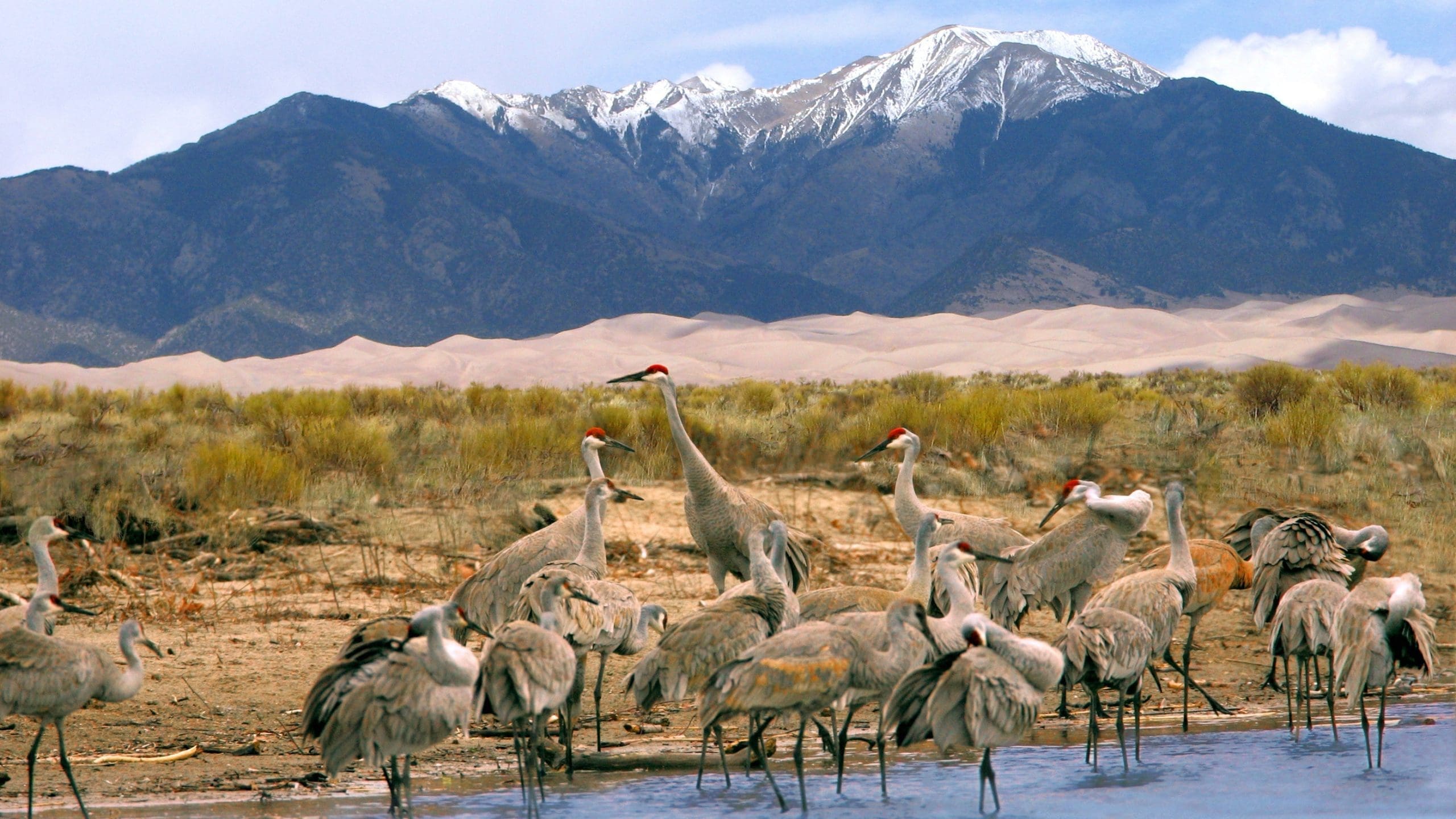Posted: May 21, 2023
Our Wildlife of the Week – 2023 Week 21…
Meet the “Sandhill Crane”!
(Grus canadensis)
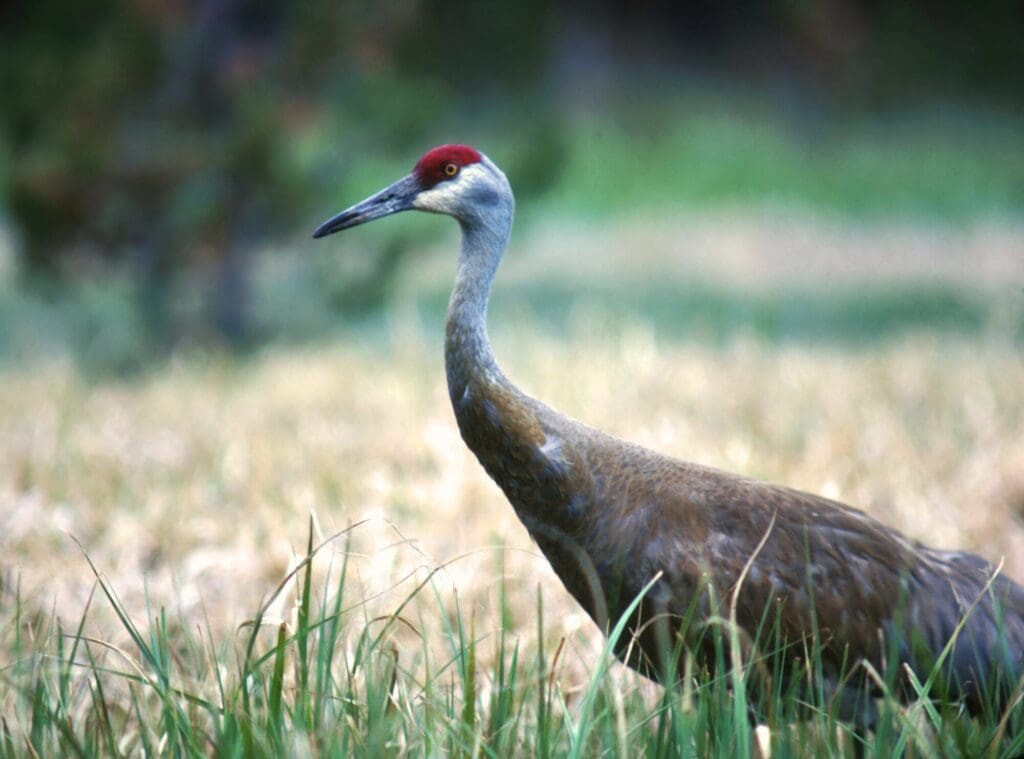
Table of Contents
Sandhill Crane Physical Description
Sandhill Cranes are large birds with heavy bodies and long necks and legs. They stand about 4 feet (1.2 meters) tall, with wing spans of about 6.5 feet (2 meters). They are uniformly grayish, with a white cheek and a bald red crown. They can be distinguished from other large wading birds in flight by their outstretched neck, and their wingbeats, which are a slow downward beat followed by a quick upward flick.1
Male and female Sandhill Cranes are similar in appearance, though males are usually larger than females.1
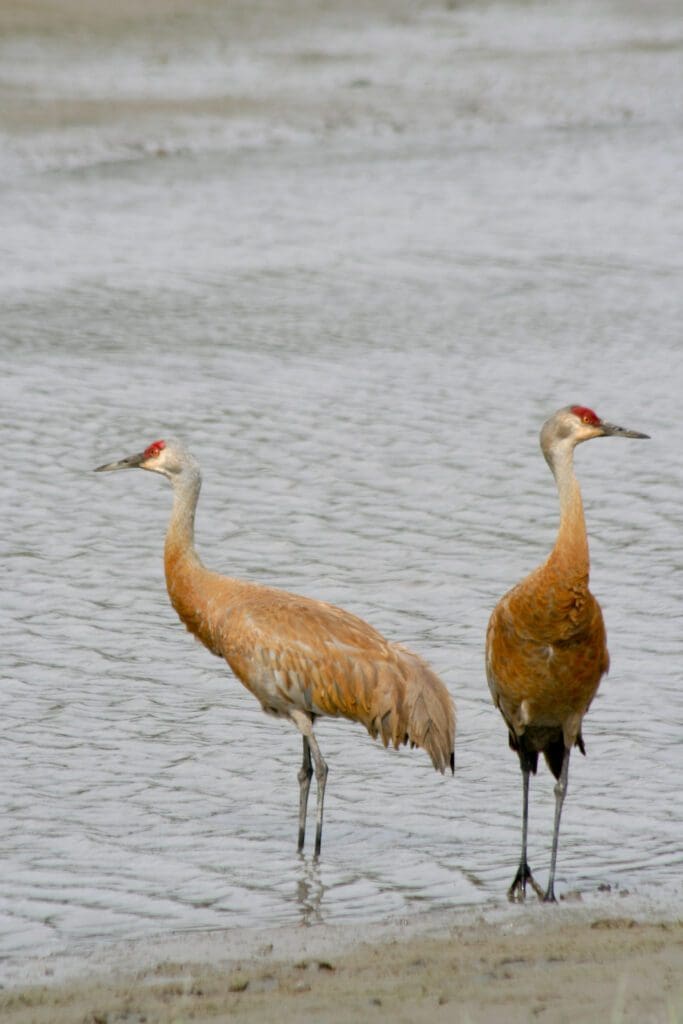
Sandhill Cranes are perennially monogamous. Breeding pairs remain together from year to year, maintaining the pair bond by performing courtship displays, remaining in close proximity and calling together in unison. Breeding pairs form during spring migration.1
This species is noted for its elaborate courtship displays. Five courtship displays have been identified as part of “dancing,” the primary mechanism of pair formation in this species. These displays are the Upright wing stretch, Horizontal head pump, Bow, Vertical leap and Vertical toss. Three courtship displays are used exclusively by paired adults to maintain the pair bond and synchronize reproductive development. These are the Bill up, Copulation and Unison call displays.1
SPONSORED ADVERTISEMENT
Sandhill Crane In Action
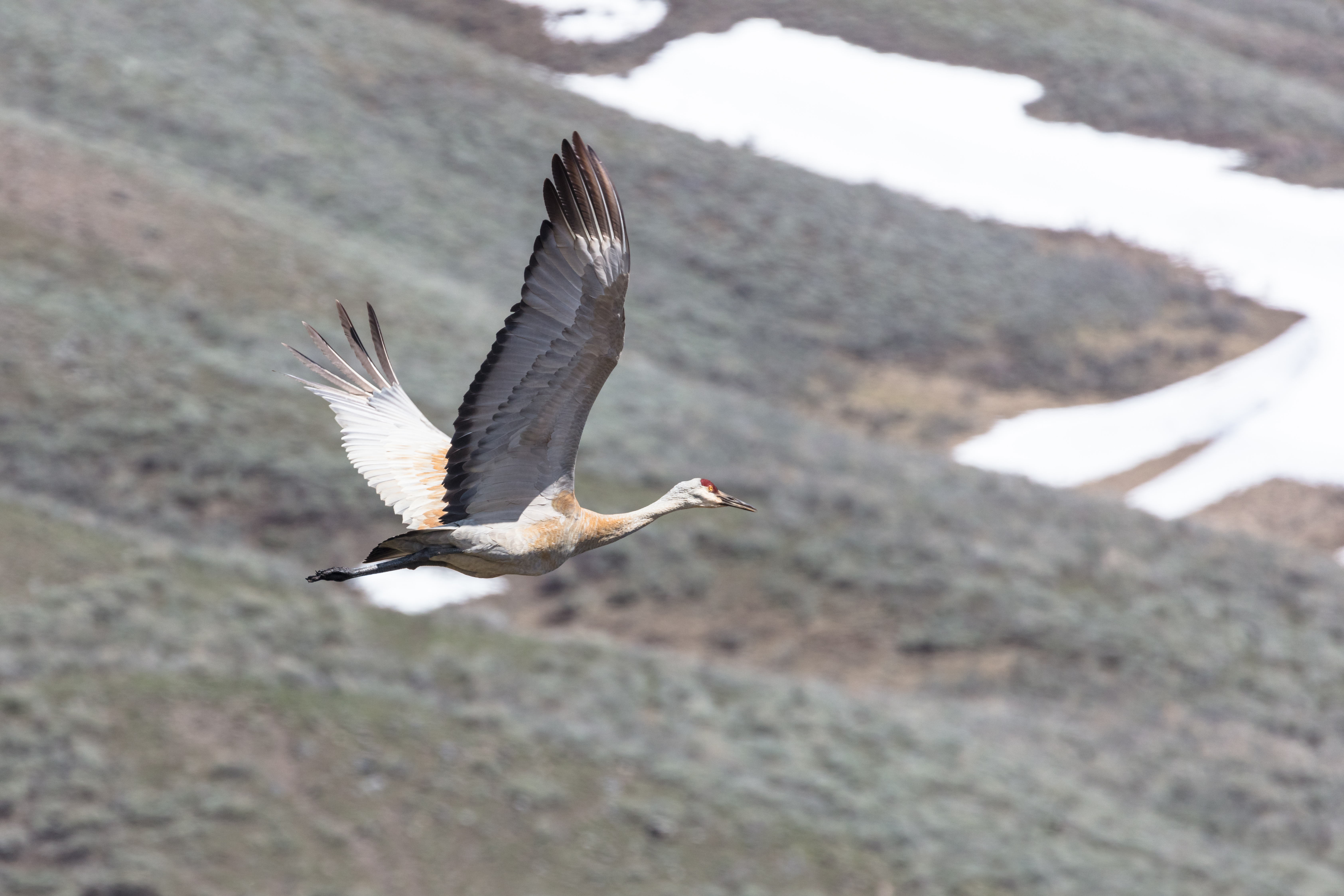
Sandhill Cranes are diurnal (of or during the day) and partially migratory. Northern populations move south during the winter months whereas southern populations remain near the breeding sites year round.1
Cranes are usually found in pairs and family groups. During the migration and winter, family groups may join with non-mated cranes to form survival groups that feed and roost together. These survival groups often congregate at migratory staging areas and on the wintering grounds.1
SPONSORED ADVERTISEMENT
Where to Spot Sandhill Cranes
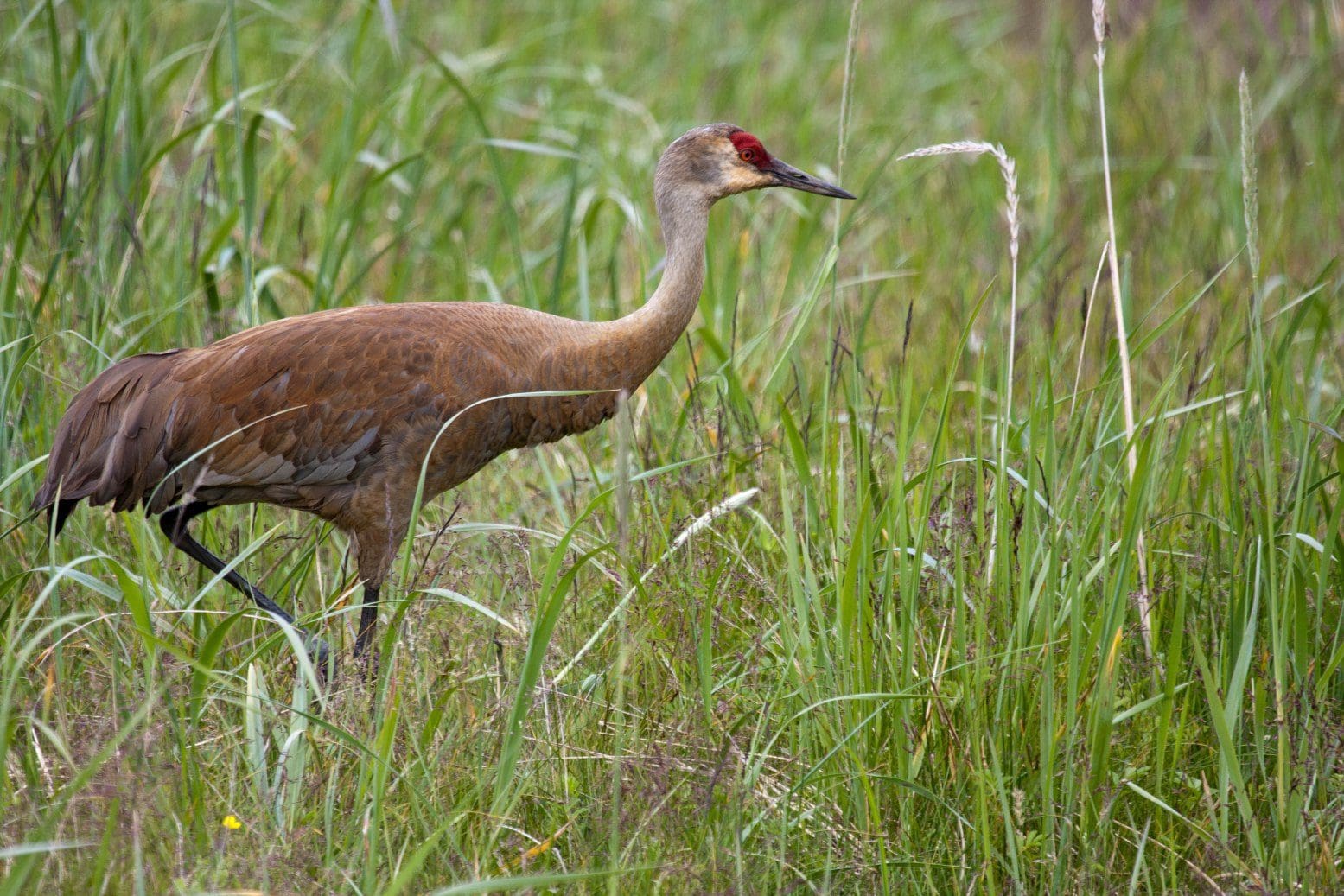
Most Sandhill Crane populations nest in open grasslands, such as wet meadows, and freshwater marshes or bogs. There are six subspecies, and each typically nests in the open, wet grassland habitats of their region.
Sandhill Cranes prefer to be far from human habitation. However, during migration, they are commonly seen feeding on crops and crop residue in agricultural fields. At night they congregate to roost in large marshes.1
In North America, this species breeds as far north as Alaska and the Arctic coast of Canada south into the Great Lakes region and westward across Idaho, Nevada and Oregon. It also breeds in the extreme southeastern United States and Cuba. The winter range of this species includes parts of California, New Mexico, Arizona, Texas, Georgia, Florida and northern Mexico. Populations are also found in northeastern Siberia, Andyrland, and on the Chyukotski peninsula and Wrangel Island.1
The Sandhill Crane can be found in over 44 National Parks and many other National Park Service sites.2 Including:
- Acadia National Park
- Badlands National Park
- Big Bend National Park
- Biscayne National Park
- Black Canyon of the Gunnison National Park
- Canyonlands National Park
- Capitol Reef National Park
- Carlsbad Caverns National Park
- Crater Lake National Park
- Cuyahoga Valley National Park
- Death Valley National Park
- Denali National Park & Preserve
- Dry Tortugas National Park
- Everglades National Park
- Gates Of The Arctic National Park & Preserve
- Glacier Bay National Park & Preserve
- Glacier National Park
- Grand Canyon National Park
- Grand Teton National Park
- Great Basin National Park
- Great Sand Dunes National Park and Preserve
- Great Smoky Mountains National Park
- Guadalupe Mountains National Park
- Indiana Dunes National Park
- Isle Royale National Park
- Katmai National Park & Preserve
- Kenai Fjords National Park
- Kobuk Valley National Park
- Lake Clark National Park & Preserve
- Lassen Volcanic National Park
- Mammoth Cave National Park
- Mesa Verde National Park
- North Cascades National Park
- Olympic National Park
- Redwood National and State Parks
- Rocky Mountain National Park
- Theodore Roosevelt National Park
- Voyageurs National Park
- White Sands National Park
- Wind Cave National Park
- Wrangell – St Elias National Park & Preserve
- Yellowstone National Park
- Yosemite National Park
- Zion National Park
SPONSORED ADVERTISEMENT
Sandhill Crane Conservation Status
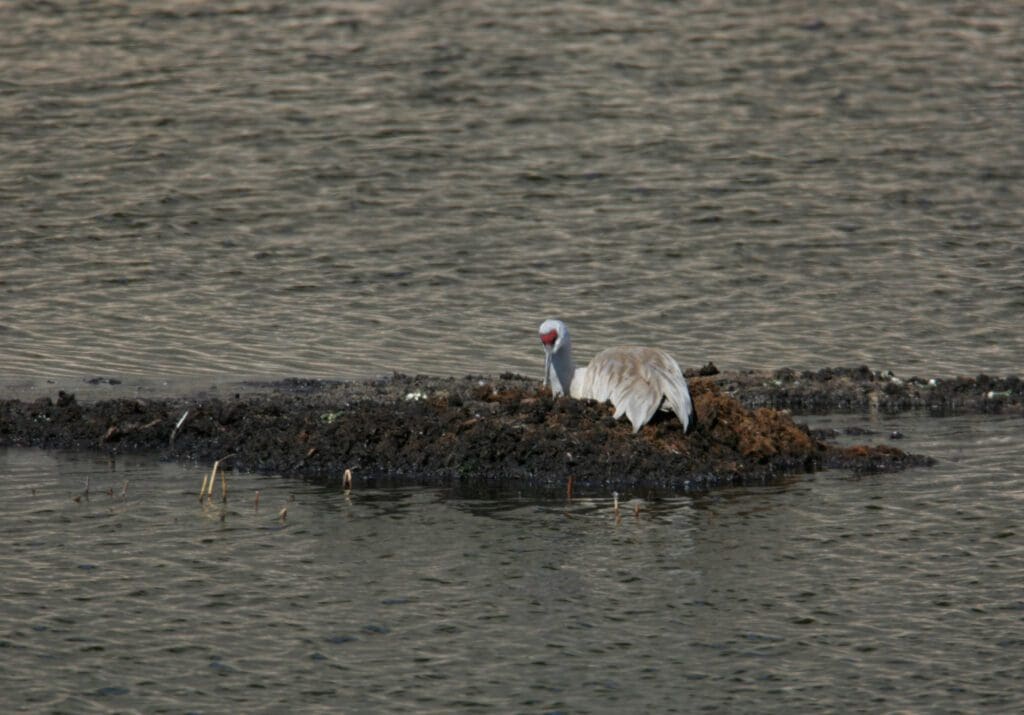
Sandhill Cranes are protected under the U.S. Migratory Bird Act and CITES (the Convention on International Trade in Endangered Species of Wild Fauna and Flora) Appendix II. Two subspecies, Grus canadensis nesiotes (Cuba Sandhill Crane) and Grus canadensis pulla (Mississippi Sandhill Crane), are federally endangered in the United States.1
Low reproduction rates limit population recovery in this species, especially by the mid-continent population, which is subject to hunting. Reintroduction of captive-reared birds has been instrumental in maintaining population size. Protection of wetland habitats is also essential for the survival of this species.1
Sandhill Crane and You
Have you seen a Sandhill Crane in it’s natural environment? Tell us about it in the comments below!
Do you have a picture of these amazing creatures? Share it on social media with us and tag us in your post.
Use the hashtag:
#WildlifeOfTheWeek.
Interested in Wildlife Photography???
Check out this amazing beginners guide from National Geographic:
National Geographic Photo Basics The Ultimate Beginner’s Guide to Great Photography
The above links are provided in this article as affiliate links. Meaning, at no additional cost to you, we’ll earn a commission if you click one and make a purchase. An easy way to help support us if you’re going to buy anyway!
Learn more about all the amazing wildlife in our National Parks and how to safely “Watch Wildlife” on this amazing page with lots of resources from the National Park Service!
Want tips for photographing wildlife? Check out this great article for tips from the National Park Service.
Help support Discover Our Parks by becoming a Patron for as little as $1 a month! Your support will help us continue to provide articles like this and add even more information about our parks to this site.
If you want to make a one-time donation, buy us a coffee!
‘We got some of the above information from the following:
1: Animal Diversity Web – Ovis Canadensis – Bighorn Sheep
2: NPSpecies – Find Parks Where a Species is Found
3: NPS – Bighorn Sheep in Nebraska
Check out these recent posts from Discover Our Parks:
- The Isolated Black-bellied Salamander: Wildlife of the Week – 2023 Week 22
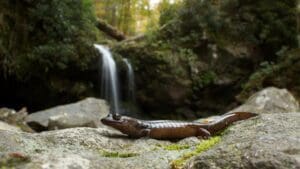
- The Splendid Sandhill Crane: Wildlife of the Week – 2023 Week 21
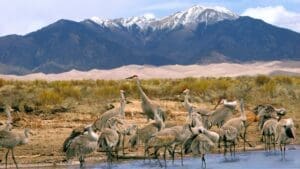
- The Promising Peregrine Falcon: Wildlife of the Week – 2023 Week 20
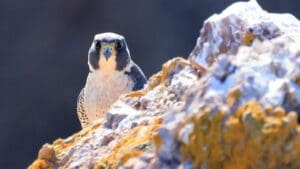
- The Intimidating Killer Whale: Wildlife of the Week – 2023 Week 19

- The Swift Fox: Wildlife of the Week – 2023 Week 18
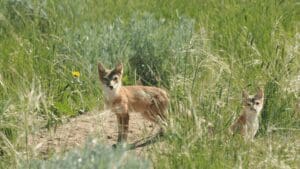
SPONSORED ADVERTISEMENT

